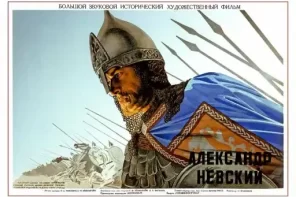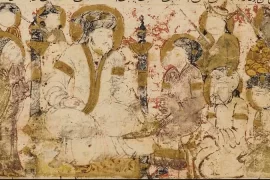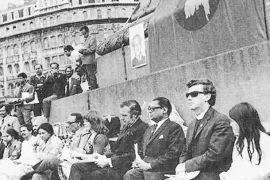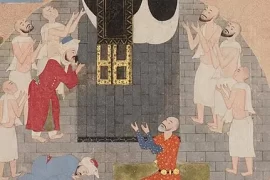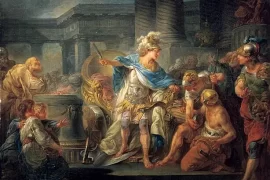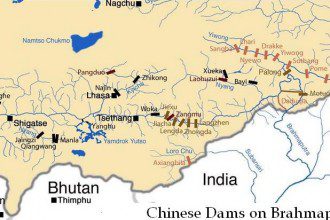The death of Emperor Constantine the Great marked a significant turning point in the history of the Roman Empire. As one of the most influential figures in the empire’s history, his reign not only witnessed the establishment of Christianity but also initiated a series of political, religious, and cultural transformations. This article aims to explore the post-Constantine era. It will shed light on the events that unfolded, ultimately leading to the decline and fall of the Roman Empire.
A Divided Empire
Constantine’s death in 337 CE presented a challenging situation for the empire. His demise left a power vacuum, prompting a struggle for succession among his three sons, Constantine II, Constantius II, and Constans. The division of power resulted in a fragmented empire, with each ruler governing different regions. This division sowed the seeds of future conflicts and instability.
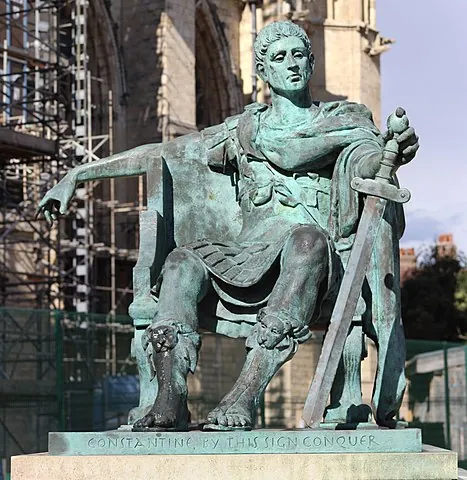
Religious Controversies
One of the most significant consequences of Constantine’s reign was his embrace of Christianity, making it the favored religion within the empire. However, this newfound religious unity did not last long after his death. The early post-Constantine era witnessed a series of religious controversies, most notably the Arian controversy. This conflict revolved around the nature of Christ and divided the empire along theological lines. It led to religious persecutions, political instability, and further divisions within the Christian community.
Barbarian Invasions
During the post-Constantine period, the Roman Empire faced increasingly frequent and severe barbarian invasions from various Germanic groups. These invasions were not entirely new phenomena. The empire had dealt with external threats in the past. However, the absence of a strong central authority, coupled with internal conflicts, weakened the empire’s ability to defend its borders effectively. The Visigoths, Vandals, Ostrogoths, and other Germanic groups seized the opportunity to raid and eventually carve out their own territories within the empire.
Constantinople: The New Imperial Capital
Constantine the Great had established a new capital for the empire, Constantinople (formerly Byzantium). It became the center of power after his death. Under his successors, the focus of the empire shifted eastward, reinforcing the divide between the Western and Eastern Roman Empire. While Constantinople flourished and became a symbol of wealth, culture, and political influence, the Western Roman Empire faced a myriad of challenges, including economic decline, political instability, and barbarian invasions.
The Fall of the Western Roman Empire
Despite several attempts by various emperors to revive and stabilize the Western Roman Empire, the empire continued to crumble. Internal conflicts, including power struggles and corruption, weakened the empire’s institutions and military forces. Additionally, economic troubles, such as inflation, taxation issues, and declining agricultural productivity, contributed to social unrest and a dwindling tax base.
The tipping point came in 476 CE when Odoacer, a Germanic chieftain, deposed Romulus Augustus, the last Western Roman Emperor. This event marked the official end of the Western Roman Empire. It was replaced by a patchwork of Germanic successor states.
Legacy of the Eastern Roman Empire
While the Western Roman Empire succumbed to external pressures and internal turmoil, the Eastern Roman Empire, known as the Byzantine Empire, persevered. The Eastern Empire, with Constantinople as its capital, continued to thrive for several centuries, preserving Roman traditions, culture, and governance. Byzantium would ultimately leave a lasting impact on the world, particularly in terms of art, architecture, literature, and the spread of Christianity.
Summary of ‘What Happened to the Roman Empire after Constantine’s Death?’
Constantine’s death marked a turning point in the Roman Empire’s history. The subsequent events set in motion a decline that would eventually lead to its demise. The fragmentation of power, religious divisions, and barbarian invasions weakened the empire from within and without, making it increasingly vulnerable to collapse.
However, it is important to note that the Eastern Roman Empire, or Byzantium, endured and thrived long after the fall of the Western Empire. The Byzantine Empire carried on the legacy of Rome, preserving its cultural and administrative traditions. It also made significant contributions to art, architecture, and religion. Its longevity demonstrates the resilience and adaptability of the Roman civilization.
The post-Constantine era serves as a cautionary tale, showcasing the consequences of political instability, religious divisions, and external threats on a once mighty empire. It highlights the importance of strong leadership, unity, and effective governance in sustaining an empire’s power and influence.

